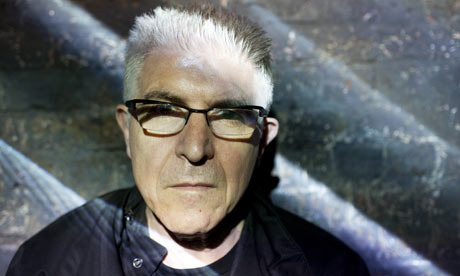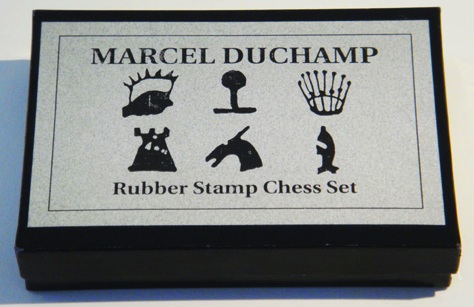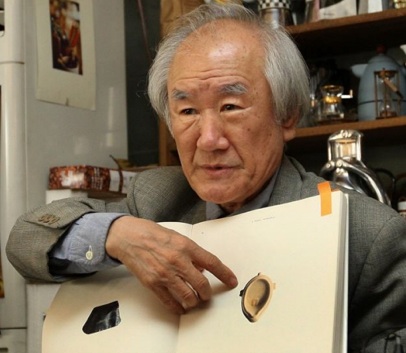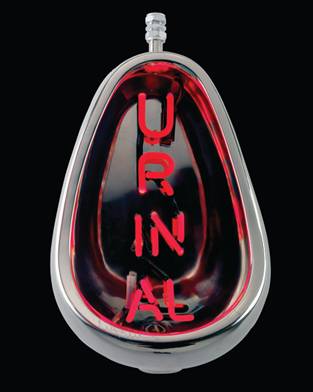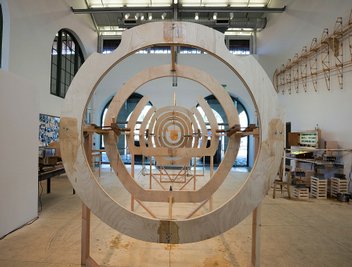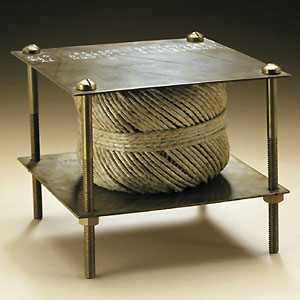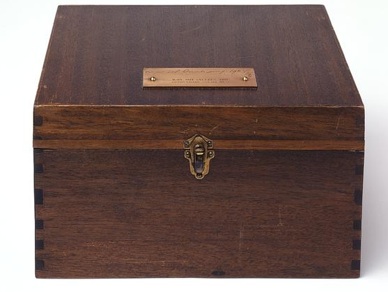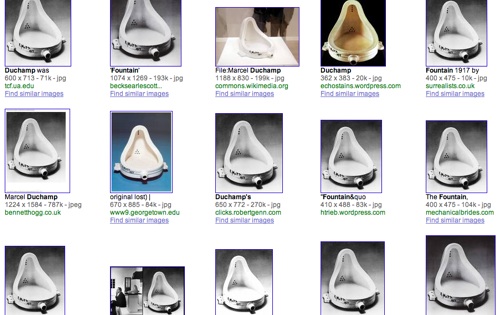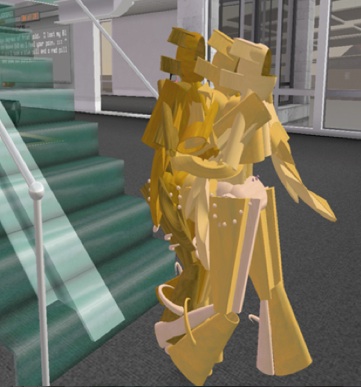Duchampian News & Views
-
Musical Sculpture and Sculptural Music
April 16, 2010Composer Bill Fontana draws musical inspiration from Marcel Duchamp’s description of the Large Glass as a form of "musical sculpture" in which sonic relationships can be preserved. While Duchamp applied "musical" principles to his malic forms, Fontana takes a "sculptural" approach to sound in the sense of using sonic elements to define space. He’s also against complexity for its own sake.
read more... -
Greetings from ‘Daddaland’
April 15, 2010 Rubber stamps have a long history as a medium for cheap, easily reproduced and even "guerilla" art, with roots stretching back through the Fluxus movement to dada. A selection of stamps that originally appeared in Picasso "Daddaland" Gaglione's San Francisco gallery uncovers this hidden history and even features a few items of interest to Duchamp fans. At New York's Stendhal Gallery through May 29. .. read more... -
Seoul Curator Vindicated
April 14, 2010 The former director of South Korea's National Museum of Contemporary Art, Kim Yoon-soo, has been ruled innocent of what the government claimed was wrongful conduct in the purchase of a copy of Duchamp's Boite-en-valise. Kim reportedly sent a broker a conditional memorandum of understanding that he wanted to buy the miniature compendium of some of Duchamp's most famous works; an incoming cabinet minister seems to have seized the chance to purge appointees of the previous admin.. read more... -
Fallis in Wonderland
April 13, 2010The work of Abigail Fallis makes gestures toward both environmental and conceptual "relevance," but it is through Fallis’ absurdist humor that these objects most immediately connect with the viewer. An upcoming show at London’s Pangolin Gallery (through July 3) demonstrates this humor through references to the nonsense poetry of Lewis Carroll — and the occasional nod to the work of Marcel Duchamp.
read more... -
Duchamp and the Triumph of the Industrial
April 12, 2010 Almost a century after Duchamp unleashed the first readymades on the world, the industrial aesthetic -- whether simply reminiscent of the factory or truly "found" -- has in some sense conquered both the museum and the workshops of contemporary sculptors and, perhaps more importantly, has bridged the divide between them. A perceptive review of an ongoing show at the Museum of Contemporary Art of San Diego (MCASD) explicates this "family relationship" betwee.. read more... -
With Hidden Noise
April 9, 2010 A blogger who recently visited the Philadelphia Museum of Art was struck by Duchamp's "assisted" readymades -- effectively assemblages -- and in particular the 1916 With Hidden Noise. Sadly the object can no longer be shaken, which makes its title (and the secret noisemaker inside) both poignant and especially compelling. The "noise" is now hidden in the museum forever; it cannot be heard as such, but lurks like an infrathin ghost...or else you can hear it.. read more... -
Pompidou Recreates the Workshop of Andre Breton
April 8, 2010 In conjunction with a more general exhibition of epochal works from its modern collection (1905-60), the Pompidou Center is dedicating a wall to art that was originally housed in Andre Breton's studio. Highlights include three Duchamp editions -- including copies of Why Not Sneeze Rose Selavy? and the Coin de Chastete -- and numerous works by surrealist comrades like Jean Arp, Francis Picabia and Roberto Matta, along with many, many anonymous sculptures of archaeological sign.. read more... -
Duchamp in the Marketplace
April 7, 2010 Debate over the authenticity and resale value of various Duchampian urinals -- copies, appropriations, relics or forgeries -- reveals anxieties around the art market that would otherwise have remained latent. If, as Reuters columnist Felix Salmon points out, the "market" determines the price of a work of art, then these earthenware replicas of working plumbing are worth whatever collectors will pay for them. However, if the artist's (or estate's) certification is required to .. read more... -
The Retinal & the Triumph of Genre
April 6, 2010 As far as the mass art reproduction market goes, representation still rules. According to a recent article by art student Ide Bouldin, the best-selling genres of digital imagery are still conventional or expressionistic landscapes, with depictions of nudes, dogs, wildlife and other figures crowding the rest of the list. "Abstracts" sell a little worse than seascapes and a little better than pictures of dogs.Bouldin notes that competition for sales would ordinarily push young.. read more...




